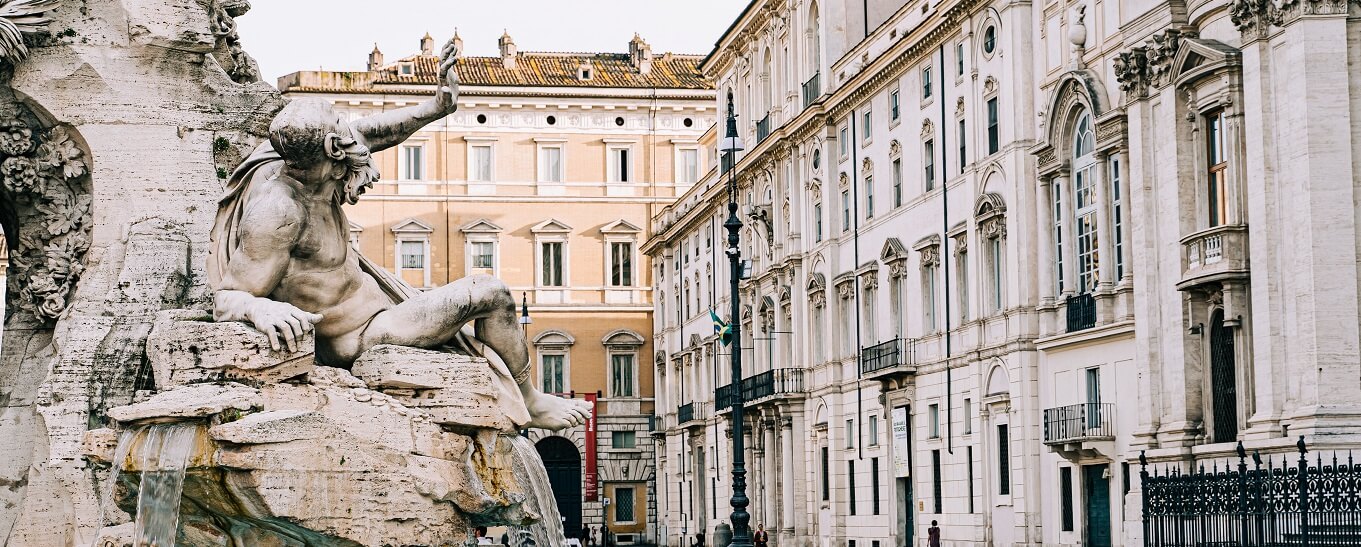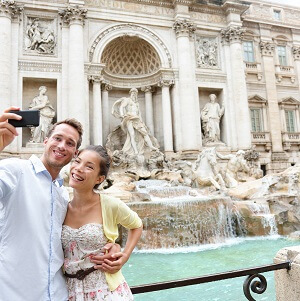The Fountain of the Four Rivers, also known as the Fontana dei Quattro Fiumi, is nestled in the stunning Piazza Navona in Rome.
The spectacular design featuring pure white travertine rock and iconic statues makes this structure a remarkable place to visit.
The History of the Fountain
Back in ancient times, the fountain was an important source of water for the community, with no underground plumbing in existence yet. However, the fountain was not just for convenience but created with magnificent beauty to show the grandiose and power of the pope and his family. The fountain was designed in 1651 by a Gian Lorenzo Bernini, commissioned by Pope Innocent X, whose family palace faced onto the piazza. Originally the Pope wanted to hire Francesco Borromini for the design, but after Bernini created a model of his design, the Pope fell in love with the fountain and assign Bernini to the project. The fountain became Bernini’s most famous creations in his entire career.
The Design of the Fountain
The fountain itself was constructed around built an Egyptian obelisk conquered by a dove, which symbolised the church and the papal family. Each of the surrounding sculptures depicted on the fountain represents the four major rivers found in the four continents of the time, being the Nile in Africa, the Ganges in Asia, the Danube in Europe and the Río de la Plata in America. The sculptures were depicted as four figures of gods. The statue with a cloth over his head symbolises the Nile in Africa, with the cloth representing the illiteracy of the pagan world. The Ganges in Asia is the god holding the oar, is seen looking away from the fountain, which represented the spiritual ignorance the Catholic Church thought the land possessed. The river of the Danube in Europe is depicted by the statue with the coat of arms. It was perceived as the most civilised and cultured river at the time, so the figure is looking into the fountain, which represented the light of the lord. Lastly, the river god holding the stack of coins represents the American river. The structure appears surprised, having just seen the light for the first time, which represented the Catholic church’s belief in the land not yet seeing the light of Christianity. Around these four figures are wildlife structures such as an obelisk and a dove. Each animal represents an important factor, including the connection of the human world to the heavens, as well as symbolising the Holy Spirit and the Pope.
Explore Our Rome Tours
-
Rome Day Tour with Vatican & Colosseum
9 Hours
€95
See More -
Morning Ancient Rome & Colosseum Tour
2.5 Hours
€72
See More -
Historical Rome Walking Tour
3 Hours
€48
See More -
Colosseum & Rome City Tour
9 Hours
€94
See More





